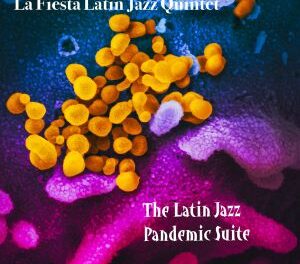The Raleigh Area Flute Association (RAFA) flute choirs got the rare opportunity to work with a low flutes expert in its Flute Choir Day at St. Philip Lutheran Church. Dr. Christine Potter, flutist and teacher from Boulder, Colorado, narrowly escaped a snowstorm in the Midwest, just in time to catch the tail end of our (much milder by comparison) wintery mix in NC. Often flute ensembles are made up of standard flutes (from here on called the C flute) and some other members of the flute family, which all share a common timbre to create a depth of sound and range unreachable by the C flute itself.
Potter offered up an afternoon packed with workshops, coaching sessions, and a performance of a special composition written solely for alto, bass, and contrabass flutes. Potter is known for her “clever and innovative performances,” as her website explains; she has recorded on kayaks in sea caves, in planetariums, and encourages audience participation often in her concerts. Potter was the chair of the National Flute Association’s Low Flutes Committee and holds regular low flute retreats, and for the first time ever will be hosting one on the east coast in Asheville, NC, from June—9-12.
Most music enthusiasts are familiar with the flute, a main melody instrument for both orchestra and concert band. Many may even recognize the piccolo, the flute’s marching band and skyward flourishing cousin, with a range an octave higher and sound often shriller than the flute. The alto flute plays a fifth lower than the C flute, and looks like a longer, thicker version of the flute. The bass flute is a full octave lower than the C flute and has a curved head joint so that the hands can stay in the same position. Finally, the contrabass flute, which plays an additional octave lower, stands up on the floor on a peg and looks like a giant number four. The lower the instrument gets, the softer and mellower the tone becomes, with the contrabass sometimes coming across as more of a booming feeling rather than a sound.
Logistically, playing some of these instruments is a major challenge. Potter explained that the flute must be balanced between the hands, rather than supported from underneath. The alto flute player has a choice between a straight or curved head joint, the curved reducing the stretch of the arms but adding weight to the head end of the instrument. Potter also introduced lip plate patches and finger positioner pads that may help serve as anchor points to prevent slipping instruments. Ultimately, the ease of playing is of utmost importance.
Beginning the afternoon was a participatory workshop and group lesson on low flutes. The main topic discussed was intonation, including issues of temperature. The colder the large mass of silver piping is, the flatter the pitches come out. However, as one plays, he or she blows warm air through the instrument, gradually raising the pitch. Similarly, the opening of the lips (or aperture) can be adjusted to manipulate the speed of the air at different octaves and thus adjust pitch. The throat and mouth cavities can also change shape and make micro-pitch changes. Potter explained that tuning is like a “moving target,” but that the player is the moving target, not the instrument! “The closer you look at what you are doing,” Potter followed up, “the more problems you find! But then you can decide to do something about it.” She encouraged the flutists to be vigilant and detail-oriented, but in a very receptive and mindful way. At the end of the workshop, the choir tackled an arrangement of “Danny Boy” to apply all they had discussed.
Following the hour-long workshop full of group chord exercises and tuning work, the mass choir which is made up mostly of members of RAFA’s most advanced community choir, the Silver Fantasy, and of the Raleigh Flute Choir, began a short rehearsal of Voices from the Deep by Alexandra Molnar-Suhajda. This five-movement work was premiered in August 2010 at the National Flute Association’s annual convention in Anaheim, California. The movements depict multiple reverent episodes from different cultures: “Aubade,” “Balletto Pensiero,” “The Temple in Cherry Blossom Time,” “Wondrous Love,” and “Valse de bravoure.” A recording of the day’s performance will be made available through the RAFA website and on the group’s YouTube account.
From beginner to advanced in level (respectively), the Silver Winds directed by Kristen Eastman, Flute Cocktail directed by Alma Coefman, and the Silver Pipes and Silver Fantasy directed by Amy Holt, each received a twenty-minute coaching session with Potter, exploring the passion and possibilities of their interpretations. The Raleigh Flute Choir, RAFA’s founding professional ensemble, played in a thirty-minute coaching session.
Flute Choir Day brought together flutists young and old, amateur and professional, playing flutes high and low. Raleigh is certainly still a thriving melting pot and gathering place for flute enthusiasts, and RAFA is the place to go if you are searching to play with enthusiastic ensembles! RAFA’s next large event will be its annual Solo & Ensemble Fest competition at Meredith College in Raleigh, NC, on April 11. For more information about the choirs, see the RAFA website.












